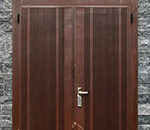Street photography during the night can be an entirely different experience from shooting during the day. It has some challenges of its own, but the creative opportunities you get are something you won’t find at other times. Neon lights, street lamps and window reflections are some of the classic examples of what you can shoot during nighttime street photography. To make the most of night street photography, however, you need to have a firm understanding of low-light conditions. So in this video, Brian Lloyd Duckett shares some fantastic tips to help you develop confidence when photographing streets at night:
Like photographing at any other time of the day, taking photos at night requires good light. But what kind of light would you call a “good light” for nighttime photos? As Duckett explains, good light is something that adds depth, mood and drama to your image. Basically, you’ll need to act like a moth and seek the light.
Once you find the right light, Duckett suggests picking a good spot and staying there. See how you can build your composition around that light. Learn to slow things down. Have patience and wait, and you’ll be surprised how the image will come to you.
Since nighttime photography can get a bit technical, Duckett also shares his preferred camera settings and gea. Prime lenses with wide apertures will make your nocturnal photoshoots much easier. Also, cameras that have better high ISO performance are a pleasure to work with at night. And remember, don’t be afraid to crank up your ISO. A little noise will not hurt.
“I’d much rather have a little bit of noise than a shot that is ruined because of blur.”
There are more night street photography tips that Duckett shares in the video, so be sure to watch the full thing. And remember to stay safe when working during the night time: you never know who or what may be lurking in the dark.
Like This Article?
Don't Miss The Next One!
Join over 100,000 photographers of all experience levels who receive our free photography tips and articles to stay current:






Very interesting video. Admittedly I’ve done very little with night street photography although I’ve been shooting for over 50 years. I understand about the need for fast lenses, high iso’s, using A and setting your exposure compensation minus one or two for the effect of just the highlights coming out. The one thing I didn’t hear you mention was metering. Should you do what some manufacturers refer to as Matrix it would talk everything into consideration, but possible making the overall shot too dark. If you were to spot you’d have to hit the light spilling onto a subject’s face and not the side of his head in darkness or your camera will want to overexpose trying to add light. So how do your settings handle that?